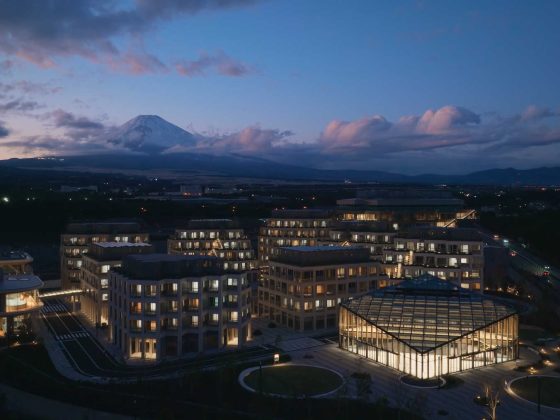The National Parks Board (NParks) announced today the Forest Restoration Action Plan for Labrador Nature Reserve which will build on earlier efforts to safeguard and enhance the nature reserve, and chart future restoration efforts up to 2030. This includes restoration of the coastal beach forest and a new Keppel Coastal Trail, which Keppel Corporation has pledged to donate S$1 million to through the Garden City Fund. The coastal beach forest and Keppel Coastal Trail will act as an important physical and ecological buffer for the adjacent coastal hill forest and enhance ecological connectivity, while allowing visitors to learn more about coastal habitats. Design and development of the Trail will commence in 2022. NParks’ efforts to restore the habitats of Labrador Nature Reserve will strengthen its ecological and climate resilience, and allow the public to experience its nature while minimising impact to biodiversity, so as to safeguard and enhance it in the long term.
NParks also commemorated the 50th anniversary of the nation-wide Tree Planting Day this morning. To mark the occasion, Minister for National Development and Minister-in-charge of Social Services Integration Desmond Lee and members of the community planted 50 native coastal trees at Labrador Nature Reserve. In addition, at the event, NParks dedicated Heritage Trees to donors who have contributed to Singapore’s greening and conservation efforts through the Garden City Fund, in acknowledgement of the important role that the community plays in transforming Singapore into a City in Nature, one of the key pillars of the Singapore Green Plan. Minister Desmond Lee presented the Heritage Tree plaques to these donors at the event.
Forest Restoration Action Plan for Labrador Nature Reserve
First introduced in 2019 for Bukit Timah Nature Reserve, Central Catchment Nature Reserve and the Central Nature Park Network, the Forest Restoration Action Plan seeks to strengthen the ecological and climate resilience of our native forests by restoring ecological processes, and enhancing the biodiversity and ecological connectivity in these areas. This will improve the habitats for native biodiversity.
One of the rare and unique habitats in Labrador Nature Reserve is the coastal hill forest. The 10-hectare coastal hill forest houses plants that grow on land adjacent to the sea and are tolerant to salt exposure and poorer soil conditions, some species of which are now very rare. We are replanting its slopes with suitable native species, including the critically endangered Broad-leaf Fern (Dipteris conjugate). The edges of the coastal hill forest are also being extended through the planting of native coastal plants.
To further strengthen the ecological and climate resilience of this core habitat, we are restoring a coastal beach forest in the 2.5-hectare area between the coastal hill forest and the sea. This will provide a significant physical and ecological buffer for the coastal hill forest, as well as increased sources of food and shelter for the fauna of Labrador Nature Reserve and its surrounding environment. The area will be planted with native species suited to the coastal environment, and rustic trails and paths will be provided to allow visitors to experience this habitat.
Our habitat restoration efforts will extend beyond the terrestrial area into the sea. The other habitat which is rare and unique, and which characterises Labrador Nature Reserve, is the rocky shore, as it is the last remaining natural rocky shore on mainland Singapore. The rocky shore comprises coral rubble, sandy substrates and seagrass beds, with rich intertidal faunal diversity. NParks has conducted intertidal surveys of the rocky shore and the seagrasses in collaboration with partners in the nature community. The surveys have recorded a wide diversity of marine species, including Blue-spotted Fantail Rays, eagle rays, and Blacktip Reef Sharks. Long-term monitoring of the rocky shore will guide future enhancement efforts and ensure the continued health of the habitat.
In conjunction with the forest restoration efforts, compatible recreational uses will be relocated from the core areas to the buffers. There will continue to be opportunities for passive nature recreation, such as educational walks along nature trails, as well as for other recreational activities, at areas further away from the core areas such as the entrance area.
Keppel Corporation’s earlier pledge of S$3 million will contribute to the planting of 10,000 trees as part of the OneMillionTrees movement, about half of which will be at Labrador Nature Reserve and will help to restore the coastal beach forest. Keppel Corporation is now contributing a further S$1 million through the Garden City Fund for a new Keppel Coastal Trail. The Keppel Coastal Trail will weave through the coastal beach forest and will be curated with information boards to allow visitors to learn more about coastal habitats, while providing views of the sea from vantage points along the trail.
50th Anniversary of Tree Planting Day
To kick-start the greening of Singapore, former Prime Minister Lee Kuan Yew had directed that a tree planting campaign be launched in 1963. On 16 June 1963, Mr Lee planted a Mempat tree (Cratoxylum formosum) at Farrer Circus to mark the start of Singapore’s greening programme. This was followed by a mass tree planting all over the city – along new roads, on traffic circuses, in housing estates, schools and car parks.
To support these greening efforts, an annual community tree-planting activity was subsequently inaugurated on 7 November 1971. Then-Acting Prime Minister, Dr Goh Keng Swee, led the community in tree-planting on Singapore’s first Tree Planting Day at Mount Faber Park. Island-wide tree-planting activities with the community were led by various Ministers and Members of Parliament in their constituencies. Tree Planting Day has since been included as part of the annual Clean and Green Singapore campaign. It continues to be a significant annual tradition for the community to come together to plant trees as it reflects Singapore’s commitment to and support of our climate resilience efforts, the City in Nature vision and the Singapore Green Plan. These efforts have been intensified by the ongoing OneMillionTrees movement with the strong support from community.
To commemorate the occasion, 50 coastal trees comprising 25 native species were planted at Labrador Nature Reserve. The public can also be a part of this annual event by joining the upcoming OneMillionTrees webinar on Singapore’s coastal forests on 13 November 2021 at https://www.nparks.gov.sg/activities/events-and-workshops/2021/11/one-million-trees-webinar-9.
Heritage Trees around Singapore dedicated to donors
NParks’ efforts in greening, research and conservation, as well as education and outreach, would not have been possible without support from the community. This includes the donors from various sectors, whose contributions through NParks’ registered charity and IPC, the Garden City Fund, are helping to enhance green spaces across Singapore and expand recreational and educational opportunities for visitors. As a mark of appreciation to these individuals and organisations for their gift contributions of at least S$1 million towards fulfilling our City in Nature vision, NParks has dedicated the following Heritage Trees to them:
- Tahitian Chestnut (Inocarpus fagifer) in Singapore Botanic Gardens – Dr Rosslyn Leong Sou Fong
- Kapur (Dryobalanops aromatica) in Singapore Botanic Gardens – Mr Leslie Tan’s late mother and sister, June and Janet Tan
- Longan (Dimocarpus longan) in Sembawang Park – Micron
- Sea Almond (Terminalia catappa) near Pasir Panjang Park – PSA










